A Guide to NFT Photography: A New Market for Photographers
Let’s be honest. The life of a photographer has changed dramatically. What used to be a world of darkrooms, gallery prints, and client commissions is now dominated by Instagram feeds, fleeting digital likes, and a constant struggle to get fairly compensated for your work. Your incredible images get shared, reposted, and used without credit, while you see very little of the value. It’s frustrating. But what if there was a way to reclaim ownership, create verifiable scarcity for your digital files, and tap into a brand new global market of collectors? That’s the promise of NFT photography.
You’ve probably heard the term ‘NFT’ thrown around, often accompanied by confusing jargon and stories of cartoon apes selling for millions. It’s easy to dismiss it as hype. But beneath the surface, there’s a technological shift happening that could fundamentally change how photographers create, sell, and profit from their art. This isn’t about getting rich quick; it’s about leveraging a new tool to build a sustainable career in a digital-first world. This guide will cut through the noise and give you a practical, no-nonsense look at how you can get started.
Key Takeaways
- What it is: NFT photography involves turning a digital photograph into a unique, verifiable asset on a blockchain, much like a signed, limited-edition print in the physical world.
- Why it Matters: It offers photographers true digital ownership, the ability to enforce scarcity, access to a global market of collectors, and the potential for passive income through automated royalties on secondary sales.
- Getting Started: The process involves choosing a blockchain (like Ethereum or Tezos), setting up a crypto wallet, buying a small amount of cryptocurrency for fees, and selecting an NFT marketplace to ‘mint’ or publish your work.
- Strategy is Key: Success isn’t just about minting. It requires careful curation of your best work, compelling storytelling, smart pricing strategies, and active community engagement, primarily on platforms like Twitter and Discord.
What Even *Is* NFT Photography? (Let’s Break It Down Simply)
Forget the complex code for a second. Let’s use an analogy every photographer understands: the limited edition print.
Imagine you shoot a breathtaking landscape. You decide to make ten high-quality, signed, and numbered prints. Each print is unique because of your signature and its number (e.g., 3/10). This proves it’s an authentic piece from you, and its value is partly derived from the fact that only ten exist. You can sell print #3 to a collector in New York. They now own that physical object. They can prove they own it. They can hang it in their gallery or sell it later.
An NFT (Non-Fungible Token) does the exact same thing, but for a digital file.
When you ‘mint’ a photograph as an NFT, you’re creating a unique digital certificate of authenticity and ownership that gets recorded on a blockchain—a secure, public, and unchangeable digital ledger. This certificate is inextricably linked to your specific image file. It’s your digital signature. It proves you are the creator and specifies who the current owner is. ‘Non-fungible’ simply means it’s one-of-a-kind and can’t be replaced with another identical item, just like one dollar bill is fungible (interchangeable with any other dollar bill), but the Mona Lisa is non-fungible.
So, while anyone can still right-click and save the JPEG of your photo, only one person can own the official, artist-verified NFT. The collector isn’t buying the JPEG; they’re buying the provenance, the story, and the verifiable link to you, the artist. It’s the difference between owning a postcard of the Mona Lisa and owning the actual Mona Lisa.

Why Should Photographers Bother with NFTs? The Real Benefits
Okay, so it’s a digital signature. Why is that such a big deal? The implications are huge for creators who have long struggled with the ‘infinitely reproducible’ nature of digital media. This technology offers tangible solutions to long-standing problems.
True Digital Ownership & Scarcity
This is the big one. For the first time, you can apply real-world scarcity to a digital file. You can decide to mint a photograph as a unique 1-of-1 piece, or as a limited edition of 20. The blockchain enforces this. There will never be more than the number you specify, and every transaction is recorded publicly. This ledger of ownership, from you to the first collector and to every subsequent owner, is called provenance. It’s a permanent record of the artwork’s history, which adds immense value and confidence for collectors.
Unlocking New Revenue Streams
The most exciting part for many photographers is the financial model. First, you get paid directly when you make the initial sale to a collector. But the real game-changer is resale royalties. Thanks to the ‘smart contract’ code embedded in the NFT, you can program it to automatically pay you a percentage (typically 5-10%) every single time your NFT is sold to a new owner in the future. Forever. Think about that. Your iconic photo from 2023 could be generating passive income for you in 2043 without you lifting a finger. This is simply not possible in the traditional art world without an army of lawyers.
Building a Global Community and Collector Base
The NFT space is incredibly community-driven. It removes the traditional gatekeepers—the galleries, the agents, the art critics. You can now connect directly with people all over the world who appreciate and want to invest in your work. Marketplaces and social media platforms like Twitter and Discord become your virtual galleries. You’re not just selling a photo; you’re inviting collectors to be part of your artistic journey. They become patrons, advocates, and often, collaborators. This direct artist-to-collector relationship is powerful and can be far more rewarding, both financially and personally, than chasing likes on social media.
A Step-by-Step Guide to Minting Your First Photo NFT
Ready to jump in? It might seem intimidating, but the process is more straightforward than you think. Here’s a breakdown of the essential steps to take your photo from your hard drive to the blockchain.

Step 1: Choosing Your Blockchain (The Foundation)
The first decision is which blockchain to use. Think of this as choosing between building your house on different types of land. The two most popular for photographers are:
- Ethereum: The biggest, most established, and most secure blockchain for NFTs. It has the largest number of collectors and the highest sales volumes. The major downside is that transaction fees, known as ‘gas fees’, can be very high and volatile, sometimes costing hundreds of dollars to mint a single piece.
- Tezos (and others like Solana/Polygon): These are newer, more energy-efficient blockchains. Their main advantage is incredibly low transaction fees, often just a few cents. This makes them a fantastic entry point for photographers who want to experiment without a huge upfront investment. The collector base is smaller than Ethereum’s but growing rapidly and is known for being very supportive of photography.
For beginners, starting on Tezos is often a wise choice to learn the ropes without breaking the bank.
Step 2: Setting Up Your Crypto Wallet
You can’t interact with the blockchain without a wallet. A crypto wallet doesn’t store your crypto; it stores the private keys that prove you own your assets. It’s your digital identity, your bank account, and your gallery key all in one. It’s critical you keep your wallet’s seed phrase (a 12 or 24-word recovery phrase) safe and offline. Never share it with anyone.
- For Ethereum (and compatible chains like Polygon): MetaMask is the industry standard.
- For Tezos: Kukai or Temple are popular and user-friendly choices.
These typically work as simple browser extensions.
Step 3: Getting Some Crypto
To mint your NFT and pay for transaction fees, you’ll need the native cryptocurrency of the blockchain you chose. You’ll need ETH for Ethereum or XTZ (Tez) for Tezos. You can buy these on a reputable cryptocurrency exchange like Coinbase, Binance, or Kraken using your local currency. Once purchased, you’ll transfer a small amount to your new crypto wallet’s public address.
Step 4: Selecting the Right NFT Marketplace
The marketplace is the online gallery where you’ll display and sell your work. Each has a different feel, community, and level of curation.
- OpenSea: The largest marketplace, primarily on Ethereum and Polygon. It’s like the Amazon of NFTs—you can find anything here. It’s open to everyone, which means it can be noisy.
- Foundation: A curated, invite-only marketplace on Ethereum known for high-quality 1/1 art. It has a more prestigious feel but is harder to get into.
- Objkt: The largest and most popular marketplace on the Tezos blockchain. It’s the go-to platform for photographers starting on Tezos due to its low fees and strong photo community.
Step 5: The Minting Process (The Big Moment!)
Minting is the act of publishing your token on the blockchain. On your chosen marketplace, you’ll find a ‘Create’ or ‘Mint’ button. The process generally involves:
- Uploading Your File: Select the high-resolution photograph you want to turn into an NFT.
- Adding Metadata: This is crucial. You’ll give your piece a title, a compelling description (tell the story behind the shot!), and add tags.
- Setting Properties: Here you’ll set your royalty percentage (e.g., 10%), and decide if it’s a 1/1 or an edition (e.g., 10 copies).
- Pricing: You can set a fixed price or put it up for auction.
- Confirming the Transaction: Your crypto wallet will pop up and ask you to approve the transaction and pay the gas fee. Once you confirm, your photo will be officially minted as an NFT on the blockchain!
Strategies for Success in the NFT Photography Space
Just minting your work and walking away is a recipe for failure. The most successful artists in this space are also fantastic community members and smart marketers. This is not a passive activity.
Curation is King: Don’t Mint Everything
Resist the urge to mint your entire back catalog. Your reputation is built on quality. The NFT space values curated, meaningful work. Treat your NFT portfolio like a tightly edited gallery exhibition, not a stock photo library. Ask yourself: Is this my absolute best work? Does it represent me as an artist? Minting less, but making each piece a significant event, is far more effective than flooding the market.
Tell a Story With Your Work
People collect stories, not just pixels. The description you add to your NFT is your chance to connect with a collector on an emotional level. Why did you take this shot? What were you feeling? What technical process was involved? What does this image mean to you? A compelling narrative can be the difference between a sale and a piece that sits for months.
“In the NFT world, the context and the story are as valuable as the image itself. You’re not just selling a photograph; you’re selling a piece of your artistic soul. Collectors want to buy into your vision, not just acquire a file.”
Marketing and Community Building (This is Non-Negotiable)
The NFT world lives on Twitter and Discord. This is where artists share their work, collectors discover new talent, and the entire community converses. You absolutely must be active on Twitter. Share your work, but more importantly, engage with others. Comment on other artists’ photos, participate in conversations, and support the community. Don’t just shill your own links. Build genuine relationships. It’s called ‘social media’ for a reason. Be social! Your network is your net worth in this space.
The Elephant in the Room: Risks and Criticisms
It wouldn’t be a complete guide without acknowledging the valid concerns surrounding NFTs. It’s important to go in with your eyes open.
Volatility and Gas Fees
The crypto market is notoriously volatile. The value of ETH or XTZ can swing wildly, impacting the value of your art and the cost of minting. Ethereum gas fees can also be a significant barrier to entry, potentially costing more than you make on a sale if you’re not careful.
The Environmental Conversation
Early blockchains like Ethereum (using a system called Proof-of-Work) were incredibly energy-intensive. This is a serious and valid criticism. However, the industry is rapidly changing. Ethereum has now completed its ‘Merge’ to a much more efficient Proof-of-Stake system, reducing its energy consumption by over 99%. Blockchains like Tezos and Solana were built from the ground up to be energy-efficient. The environmental argument is becoming less of an issue, but it’s important to be aware of the history.
Scams and Security
The space is new and, like any frontier, has its share of bad actors. Be vigilant about phishing scams, fake marketplace links, and people DMing you with suspicious offers. Never give out your wallet’s seed phrase. Double-check every transaction before you approve it. Your security is your responsibility.

Conclusion
NFT photography is more than just a fleeting trend; it represents a fundamental shift in how digital art can be valued, owned, and traded. It puts power back into the hands of the creator, offering a direct path to a global audience of passionate collectors. It’s a world that rewards quality, storytelling, and community engagement. Yes, there is a learning curve, and there are risks involved. But for the photographer willing to put in the time to understand the technology and engage with the community, the opportunity is immense. It’s a chance to build a new kind of career, one where your digital work finally gets the recognition and value it has always deserved.
FAQ
Do I lose the copyright to my photo when I sell it as an NFT?
No, you do not. This is a common misconception. When you sell an NFT, you are selling the token that represents ownership of that specific version of the artwork. By default, you, the artist, retain the full copyright and intellectual property rights to the image. You can still use it for prints, commercial work, etc., unless you explicitly state otherwise in a separate agreement. The collector is buying the right to own, display (personally), and resell that specific token.
What kind of photography sells best as an NFT?
There’s no single magic formula, but several genres have found strong footing. Fine art photography, including breathtaking landscapes, unique conceptual work, and powerful portraiture, does very well. Street photography with a strong narrative component is also popular. Ultimately, the work that sells best is the work that is authentic, high-quality, and has a compelling story attached to it. Rather than chasing trends, focus on minting the work that truly represents you as an artist. Authenticity resonates with collectors.
Is it too late to get into NFT photography?
Absolutely not. While the initial hype wave of 2021 has settled, the market is now maturing. The ‘get rich quick’ speculators have largely moved on, leaving a community of genuine artists and collectors focused on building a sustainable ecosystem for digital art. We are still in the very early days of this technology. Getting in now means you are still an early adopter, with the opportunity to establish yourself before it becomes completely mainstream.



 AI and Blockchain: A Powerful Tech Synergy
AI and Blockchain: A Powerful Tech Synergy 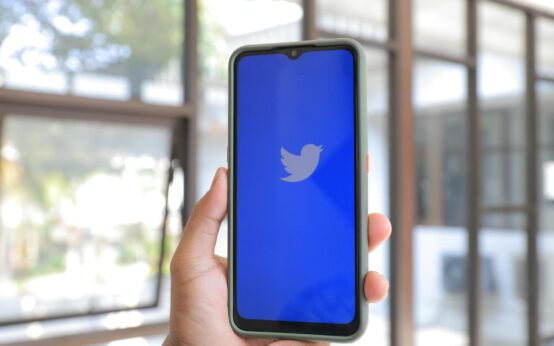 Get a Job in Blockchain: Your 2024 Web3 Career Guide
Get a Job in Blockchain: Your 2024 Web3 Career Guide 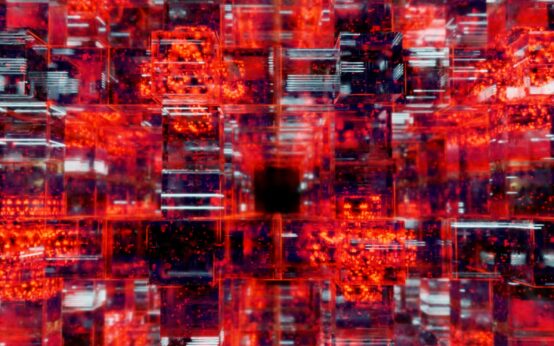 Wallet Types Explained: Hot vs Cold & More (2024 Guide)
Wallet Types Explained: Hot vs Cold & More (2024 Guide)  How Venture Capital is Shaping the Crypto Industry
How Venture Capital is Shaping the Crypto Industry 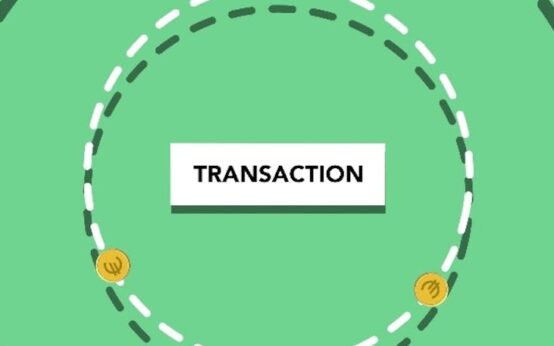 Sentiment Analysis for Crypto: A Trader’s Ultimate Guide
Sentiment Analysis for Crypto: A Trader’s Ultimate Guide 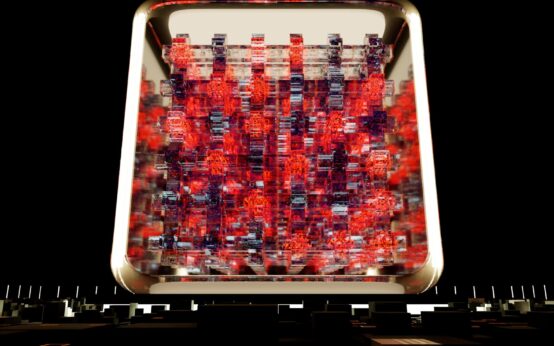 NFTs: The New Key to Membership & Brand Loyalty | Guide
NFTs: The New Key to Membership & Brand Loyalty | Guide  AI and Blockchain: A Powerful Tech Synergy
AI and Blockchain: A Powerful Tech Synergy  Get a Job in Blockchain: Your 2024 Web3 Career Guide
Get a Job in Blockchain: Your 2024 Web3 Career Guide 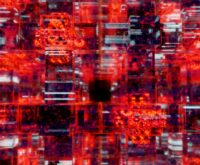 Wallet Types Explained: Hot vs Cold & More (2024 Guide)
Wallet Types Explained: Hot vs Cold & More (2024 Guide)  How Venture Capital is Shaping the Crypto Industry
How Venture Capital is Shaping the Crypto Industry  Sentiment Analysis for Crypto: A Trader’s Ultimate Guide
Sentiment Analysis for Crypto: A Trader’s Ultimate Guide  NFTs: The New Key to Membership & Brand Loyalty | Guide
NFTs: The New Key to Membership & Brand Loyalty | Guide